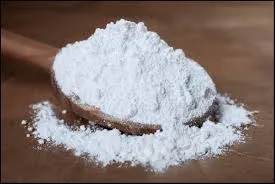
1-butyne structure
Understanding the Structure of 1-Butyne
1-Butyne, a member of the alkyne family, is a straight-chain hydrocarbon with the molecular formula C4H6. As a terminal alkyne, it has a triple bond between the first and second carbon atoms in its carbon chain. The unique structure of 1-butyne plays a crucial role in its chemical properties and reactivity, making it a significant compound in organic chemistry.
To delve into the structure of 1-butyne, we can start by examining its carbon skeleton. The compound consists of four carbon atoms arranged in a linear configuration. The triple bond, which is characteristic of alkynes, occurs between the first two carbon atoms of the chain C≡C. This bond leads to specific spatial arrangements and bond angles that differ significantly from those seen in alkenes and alkanes.
Understanding the Structure of 1-Butyne
The overall structure can be visualized as follows one end of the molecule features a hydrogen atom bonded to the sp-hybridized carbon (C1), connected by a triple bond to the second carbon (C2), which in turn is bonded to another carbon (C3) and a hydrogen atom, while the fourth carbon (C4) is connected to two hydrogen atoms. This configuration supports the terminal nature of 1-butyne since the triple bond is located at one end of the carbon chain.
1-butyne structure

The presence of the triple bond is significant, not only providing a site for reactivity but also influencing the physical properties of the compound. For instance, 1-butyne has a relatively lower boiling point than its saturated counterparts, such as n-butane, due to the linear structure and the presence of the triple bond. This compound is a gas at room temperature and has distinct olfactory properties, often described as having a slightly sweet or pungent smell.
Moreover, the reactivity of 1-butyne can be attributed to the triple bond, which is a region of high electron density. This feature allows 1-butyne to undergo various reactions typical of alkynes, including hydrogenation, halogenation, and oxidation. The triple bond can be converted into double or single bonds through these reactions, thereby creating various derivatives useful in synthesizing more complex organic molecules.
In addition to its utility in organic synthesis, 1-butyne finds applicability in various industrial processes, including the production of polymers, pharmaceuticals, and other chemicals. Its distinct structure and reactivity enable chemists to exploit its properties for various practical applications.
In conclusion, the molecular structure of 1-butyne is a critical aspect that defines its physical and chemical properties. Understanding this alkyne's behavior, reactivity, and applications hinges on appreciation of its unique carbon backbone, hybridization, and the implications of its terminal triple bond. 1-Butyne's relevance extends beyond merely being a straight-chain alkyne; it serves as a fundamental building block in organic chemistry, vital for advancing both theoretical knowledge and practical applications in the field.
-
Understanding Synthetic Rubber OptionsNewsApr.27,2025
-
Trichloroisocyanuric Acid: Essential for Clean and Safe WaterNewsApr.27,2025
-
Sodium Dichloroisocyanurate: Key to Safe Water TreatmentNewsApr.27,2025
-
Sodium Acid Pyrophosphate: Essential in Modern Food ProcessingNewsApr.27,2025
-
Essential Water Treatment ChemicalsNewsApr.27,2025
-
Denatured Alcohol and Its Industrial UsesNewsApr.27,2025
-
The Versatile Uses of Sodium BicarbonateNewsApr.24,2025
Hebei Tenger Chemical Technology Co., Ltd. focuses on the chemical industry and is committed to the export service of chemical raw materials.
-

view more DiethanolisopropanolamineIn the ever-growing field of chemical solutions, diethanolisopropanolamine (DEIPA) stands out as a versatile and important compound. Due to its unique chemical structure and properties, DEIPA is of interest to various industries including construction, personal care, and agriculture. -

view more TriisopropanolamineTriisopropanolamine (TIPA) alkanol amine substance, is a kind of alcohol amine compound with amino and alcohol hydroxyl, and because of its molecules contains both amino and hydroxyl. -

view more Tetramethyl Thiuram DisulfideTetramethyl thiuram disulfide, also known as TMTD, is a white to light-yellow powder with a distinct sulfur-like odor. It is soluble in organic solvents such as benzene, acetone, and ethyl acetate, making it highly versatile for use in different formulations. TMTD is known for its excellent vulcanization acceleration properties, which makes it a key ingredient in the production of rubber products. Additionally, it acts as an effective fungicide and bactericide, making it valuable in agricultural applications. Its high purity and stability ensure consistent performance, making it a preferred choice for manufacturers across various industries.











